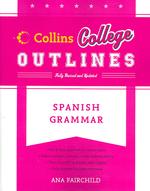Full Description
Teaching and Learning About Genocide and Crimes Against Humanity: Fundamental Issues and Pedagogical Approaches by Samuel Totten, a renowned scholar of genocide studies and Professor Emeritus, College of Education and Health Professions, University of Arkansas, Fayetteville, is a culmination of 30 years in the field of genocide studies and education. In writing this book, Totten reports that he "crafted this book along the lines of what he wished had been available to him when he first began teaching about genocide back in the mid-1980s. That is, a book that combines the best of genocide theory, the realities of the genocidal process, and how to teach about such complex and often terrible and difficult issues and facts in a theoretically, historically and pedagogically sound manner." As the last book he will ever write on education and educating about genocide, he perceives the book as his gift to those educators who have the heart and grit to tackle such an important issue in their classrooms.
Contents
Introduction.
Part I. Genocide: An Overview.
Raphael Lemkin: Coining the Term Genocide and Advocating for the UN Convention on the Prevention and Punishment of Genocide.
Genocide in the 19th, 20th, and 21st Centuries.
Typologies of Genocide.
The Process of Genocide.
The Wretched Record of the International Community vis-a-vis the Prevention and Intervention of Genocide.
More Positive Actions and News vis-a-vis Prevention and Intervention.
Fighting Impunity: At Least Somewhat.
Working to Prevent Genocide and/or Intervene in a Timely and Effective Fashion.
Part II. Genocide: What It Is and Isn't.
The Crafting of the UNCG.
Intent: One of the Keys to the UNCG Definition of Genocide in Regard to Whether the Perpetration of Atrocities Constitute Genocide or Not.
The Focus of Genocide: Groups, Not Individuals.
The Word "Destroy".
The Wording "in Whole or in Part".
Those Groups That Are and Are Not Protected Under the UNCG.
The Wording "As Such".
Acts That Constitute Genocide Punishable Under the UNCG.
Perpetrators and Their Prosecution.
Part III. Crimes Against Humanity, Ethnic Cleansing, and Genocide: Key Distinctions
Crimes Against Humanity.
Ethnic Cleansing.
Genocide.
Key Distinctions Between Genocide, Crimes Against Humanity, and Ethnic Cleansing.
Perhaps a Focus on Crimes Against Humanity and Not Genocide Would Be More Sagacious.
A Classroom Learning Activity cum Evaluation: The Significance of the Distinctions Between and Amongst Crimes Against Humanity, Ethnic Cleansing, and Genocide.
Part IV. Misconceptions, Inaccuracies, and Myths that Often Plague Teaching and Learning about Genocide
Select Examples of Misconceptions.
Part V. The Prevention and Intervention of Genocide.
The Best Way to Prevent Crimes Against Humanity and Genocide Is Before They Begin.
Early Warning Signals.
Preventive Diplomacy: A Wide Array of Early Measures to Ease Tensions, Stave Off Violence, and Bring a Modicum of Stability to a State or Region.
Sticky and Sticking Issues.
A Pedagogical Approach.
Part VI. Issues of Rationale: Teaching About Genocide and Crimes Against Humanity.
Issues of Rationale.
Major Questions That Might Be Wise to Ask at the Outset of One's Planning: Why Genocide? Why Not Human Rights? Why Not Crimes Against Humanity?
So What?
Examples of Issues of Rationale: Genocide.
Reflecting on One's Rationales in Order to Ascertain if Lacuna Exist.
Helping Students Reflect on Issues of Rationale.
Part VII. Teaching About Genocide and Crimes Against Humanity: Instructional Issues, Teaching Strategies and Learning Activities.
The Null Curriculum.
Weak Pedagogy Plagues Many Lessons and Units on Genocide.
Key Pedagogical Concerns When Teaching About Crimes Against Humanity and/or Genocide.
Addressing More Than the Holocaust or a Single Case of Crimes Against Humanity or Genocide Per Year.
The Significance of Carefully Selecting and/or Crafting and Implementing Solid Teaching Strategies and Learning Activities.
Teaching Strategies and Learning Activities That Challenge Students to Dig More Deeply.
An Activity to Carry Out Prior to the Start of the Unit of Study.
Written Responses to Readings: Preparation for Class Discussions/Short Lectures.
Reflective Journals.
Crafting a Critical Biographical Analysis of a Major Figure (Other Than a Victim or Perpetrator) Related to the Issue of Crimes Against Humanity or Genocide.
Extra Credit.
Closing Activities.
Part VIII. Incorporating First-Person Accounts Into a Study of Genocide and Crimes Against Humanity.
Incorporating First-Person Accounts Into a Study of Crimes Against Humanity and/or Genocide.
Value of Contemporaneous Accounts.
Issues to Ponder/Consider When Using First-Person Accounts of Genocide in the Classroom.
Incorporating First-Person Accounts into a Study of Genocide: Learning Activities.
Part IX. Incorporating Primary Documents Into a Study of Genocide and Crimes Against Humanity.
Primary Documents.
Primary Documents and Genocide.
A Sample of Those Primary Documents That Are Both Highly Informative and Revelatory.
The Value of Incorporating Primary Accounts into a Study of Genocide.
Pedagogical Approaches for Incorporating Primary Accounts into a Study of Crimes Against Humanity and/or Genocide.
Incorporating Documents at Critical Points in the Study.
Part X. Denying Deniers the Opportunity to Deceive and Influence One's Students: Educators and Students BEWARE: Deniers and Their Efforts at Denying Facts Are Found All Across the Internet.
The Deniers and Distorters.
Approaches and Tactics of Deniers and Characteristics of Denial.
Provide Students With a List of Major Deniers of Various Genocides.
Part XI. Who Isn't a Bystander to Genocide and Crimes Against Humanity?
What Is a Bystander?
The Bystanders in the Region of the Killing Fields? Outside the Region? Both Those Inside and Outside?
How Does One Avoid Becoming a Bystander? Conclusion.
Appendices:
A. Convention on the Prevention and Punishment of the Crime of Genocide.
B. Crimes Against Humanity.
C. Implementing the Responsibility to Protect.
About the Author.







